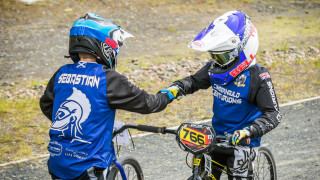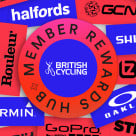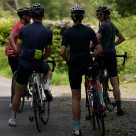Equality
Equality is becoming a familiar concept in the media, but what exactly does it mean and what is its significance in the context of sport? Why is it relevant to Scottish Cycling and its members? Simply defined, equality is about fairness, including equality of opportunity. It means recognising and respecting cultural and social diversity. Being equitable means treating everyone fairly and according to their needs, which is not always the same thing as treating everybody the same.
Everyone involved in sport should be concerned with good practice, with fairness and inclusion, and with ensuring that opportunities to participate are fair for all, regardless of who we are, where we come from, what our beliefs or social backgrounds are. Being an equitable organisation is an essential prerequisite for government funding and it underlies Scottish Cycling's strategic objectives.
We are also committed to embedding a culture of equality and diversity in our organisation and ensuring that all employees are treated fairly, without discrimination because of age, disability, gender reassignment, marriage or civil partnership, pregnancy and maternity, sex, race, religion or belief, or sexual orientation.
Scottish Cycling is committed to meeting its requirements under the Equality Act 2010. The Equality Act 2010 states that public bodies must have due regard to the need to:
- Eliminate unlawful discrimination, harassment and victimisation and other conduct prohibited by the Act.
- Advance equality of opportunity between people who share a protected characteristic and those who do not.
- Foster good relations between people who share a protected characteristic and those who do not.
The Act is supported by more specific duties for Scottish public bodies in the Equality Act 2010 (Specific Duties) (Scotland) Regulations 2012.
For any issues regarding Child Protection or Equality, please contact Scottish Cycling on 0141 554 6021
Equality in Sport
“Providing a wide range of equality-related material to assist all sporting organisations become more equitable and to provide a service to all sectors of the population.”
The Equality in Sport website carries a wide range of information from equality training, publications and resources - with a separate page for sport specific publications full of information and news to support people working to deliver sport that is open and welcoming to everyone.
For more information visit: www.equalityinsport.org
Accessibility
Many web browsers provide numerous extra features that make web browsing more accessible for those with vision, learning, physical, or other impairments.
These features can include keyboard shortcuts, overriding page colours and fonts, increasing page font-size, zooming capabilities, screen reader capability, and controlling web content, including pop-ups. The five major web browsers, Google Chrome, Internet Explorer, Mozilla Firefox, Opera, and Safari, implement the accessibility features in different ways.
One of the easiest accessibility features is the keyboard shortcut that can quickly increase or decrease the font size of a web page in most web browsers. If you are on a Mac, hold down the command key and strike the + sign at the same time. Repeat this until you're satisfied with the on-screen font size. If you want to decrease the font size, hold down the command key and strike the - sign at the same time. Repeat this until you're satisfied with the on-screen font size. This is very similar on a PC, except it's CTRL+ or CTRL -.
Operating Systems and Web Browsers
Click the link below to compare Web Browsers based on their accessibility to decide which is best for you.
Accessibility features in Web Browsers compared by Wikipedia
The BBC has some useful guidance about:
- making your mouse easier to use
- using your keyboard to control your mouse
- alternatives to a keyboard and mouse
- increasing the size of the text in your web browser
- changing text and background colours
- how to magnify your screen
- screen readers and talking browsers.
















